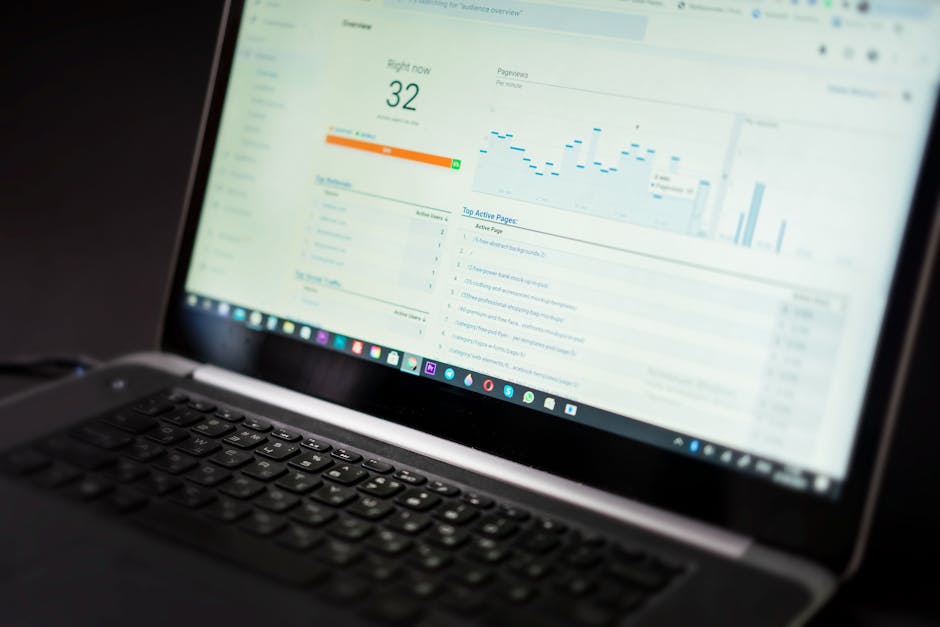In the ever-evolving tech landscape, serverless frameworks are gaining traction among developers and businesses alike. These frameworks simplify application deployment and management, allowing teams to focus on writing code instead of worrying about infrastructure. With the scalability, flexibility, and cost-effectiveness they offer, it’s no surprise that serverless computing is becoming a preferred choice for modern app development.
One crucial aspect of this cloud-based paradigm is the importance of API monitoring and analytics. As APIs serve as the backbone of communication between various services and applications, ensuring their reliability and performance is paramount. Without effective monitoring, organizations risk downtime, degraded user experiences, and ultimately, loss of trust. In today’s competitive environment, having robust API monitoring in place isn’t just beneficial; it’s essential for delivering high-quality applications.

Serverless frameworks revolutionize the way developers build and deploy applications by abstracting the underlying infrastructure management. In simple terms, they allow you to focus on writing code without worrying about the servers that run it. Here’s a breakdown of what serverless frameworks entail:
Serverless computing comes with several compelling features:
The cloud provider takes care of essential functions such as:
As a result, you can focus on innovating and iterating on your application.
In summary, serverless frameworks are game-changers for developers looking to streamline processes and turbocharge application performance. They free you from the complexities of infrastructure management, allowing you to concentrate on what truly matters—your code.

In the rapidly evolving landscape of cloud-based applications, API monitoring stands as a critical pillar for ensuring seamless performance and user satisfaction. APIs (Application Programming Interfaces) are the backbone of modern software, enabling different applications to communicate and share data. Without effective monitoring in place, organizations may encounter a host of issues that can severely impact their operations.
First off, API downtime can directly result in lost revenue and diminished customer trust. If an API is unresponsive, it can disrupt services, leading to frustration among users. Monitoring allows businesses to quickly detect outages or slowdowns, enabling rapid response to minimize any potential fallout.
Moreover, performance issues can easily fly under the radar without proper monitoring. A slight degradation in response time may initially go unnoticed, but over time it can result in a poor user experience and increased churn rates. With API monitoring, organizations gain insights into response times, error rates, and overall throughput, helping them pinpoint and address issues before they escalate.
Another common challenge businesses face is the sheer volume of data generated by APIs. Without effective monitoring strategies, this data can become overwhelming—leading to missed alerts and misplaced priorities. Automated monitoring solutions can simplify this process, providing comprehensive dashboards that highlight key performance indicators (KPIs) and trending issues.
In summary, API monitoring is not just a technical necessity; it’s a strategic asset. With it, organizations can ensure that their applications perform at peak levels, maintain customer satisfaction, and ultimately drive business success. Without it, they risk falling into a cycle of reactive problem-solving, eroding the reliability and reputation of their services.

Integrating serverless frameworks with API monitoring offers a unique opportunity to streamline how we track application performance and ensure reliability. With serverless architecture, monitoring becomes more robust and agile, primarily due to its inherent design and features.
In essence, the integration of serverless frameworks with API monitoring redefines how businesses maintain their applications.
By leveraging these advantages, companies can significantly enhance their operational efficiency and user satisfaction.

Cloud analytics refers to the use of cloud-based tools and services to collect, process, and analyze data for insights that inform decision-making. In the era of cloud computing, this approach has become essential for modern application development, particularly when it comes to monitoring APIs.
Serverless frameworks, such as AWS Lambda and Azure Functions, streamline the ability to leverage cloud analytics for real-time insights. They allow developers to focus on writing code without worrying about the underlying infrastructure. This means teams can implement monitoring and analytics solutions that respond to the demands of their applications without the typical overhead.
Real-time analytics for APIs is crucial for assessing performance. Key performance metrics include:
Response Times: How quickly your API responds can significantly impact user experience. Serverless architectures often enable faster response times by utilizing on-demand resources that scale with traffic.
Error Rates: This metric highlights the reliability of your API. Monitoring error rates helps identify issues before they affect users. Integrating cloud analytics with serverless frameworks can provide immediate alerts for unusual spikes in errors.
Throughput: This refers to the number of requests your API can handle in a given time frame. Serverless architectures excel in scalable resource allocation, which means you can achieve higher throughput during peak usage times without manual intervention.
By aligning cloud analytics with serverless frameworks, teams can easily visualize these performance metrics in real time. This capability allows for quicker adaptations to API usage, ensuring that applications remain responsive and reliable as they scale. Embracing this integration empowers businesses to stay competitive while delivering optimal user experiences.

When it comes to integrating serverless frameworks with API monitoring, several heavyweight tools stand out. Here’s a quick rundown of popular serverless platforms and analytics solutions that can supercharge your API monitoring efforts.
Automatic scaling helps handle workload spikes seamlessly.
Azure Functions
Ideal for real-time monitoring systems that require quick reactions to API performance changes.
Google Cloud Functions
Provides a comprehensive view of your cloud environment.
New Relic
Features tailored APM for serverless, allowing easy tracking of API efficiency.
Prometheus and Grafana
Grafana: Creates visual dashboards to monitor performance in real-time.
Serverless Framework Dashboard
By leveraging these tools and technologies, you can create a powerful ecosystem for monitoring your APIs. Integration is typically straightforward, and the results—from improved performance metrics to enhanced insights—can be significant.
Whether you’re a startup or an established enterprise, exploring these options can set you on the path to effective API monitoring in a serverless world.

When it comes to using serverless frameworks for API monitoring, you’ll want to focus on a few best practices to get the most out of your setup. Here are some strategies to consider:
Leverage Built-in Monitoring Tools: Most serverless platforms like AWS Lambda and Azure Functions come with monitoring tools. AWS CloudWatch, for example, can automatically track metrics for your functions. Utilize these built-in features to get a starting point for monitoring your APIs.
Set Clear KPIs: Define key performance indicators (KPIs) that matter for your APIs. Common KPIs include response times, error rates, and request volumes. Having clear KPIs helps you understand what success looks like and keeps your monitoring focused.
Establish Alerts and Thresholds: Instead of waiting for issues to become critical, set up alerts for your defined KPIs. For example, if your response time exceeds a certain threshold, get notified immediately. This proactive approach allows for quick remediation before a small problem escalates.
Utilize Distributed Tracing: In serverless environments, requests can span multiple services and functions. Implement distributed tracing tools like AWS X-Ray or OpenTelemetry to track requests end-to-end. This ensures you can pinpoint where latency or errors occur across services.
Regularly Review and Adjust: Monitoring is not a set-it-and-forget-it task. Regularly review your monitoring setup and adjust your metrics and alerts as your application evolves. What worked last month may not be relevant today, especially in fast-paced environments.
Bookend Operations with Logging: Integrate robust logging at both the entry and exit points of your API functions. This helps capture the context needed for debugging and ensures you have adequate information to analyze issues when they arise.
Incorporate Load Testing: Before major deployments, run load tests to understand how your API behaves under various scenarios. This gives you insights on how to scale your serverless functions and fine-tune your monitoring strategy to handle peak loads.
By following these best practices, you can optimize your API monitoring in a serverless ecosystem, ensuring better reliability and performance for your applications.

Company A, a mid-sized e-commerce platform, faced latency issues during peak shopping seasons. They adopted AWS Lambda for API calls to process transactions and paired it with CloudWatch for monitoring.
The proactive monitoring allowed the team to address performance bottlenecks in real-time, ensuring a seamless shopping experience.
Tech Startup B, specializing in data analytics, struggled to manage API traffic efficiently as their user base grew. They transitioned to Azure Functions combined with Azure Application Insights for API monitoring.
This integration provided real-time visibility into API performance metrics, enhancing the overall user experience.
Recognizing the need for stringent API monitoring due to regulatory compliance, a financial institution implemented Google Cloud Functions integrated with BigQuery for analytics.
The analytics tools helped the institution ensure compliance while reducing risk.
SaaS Company D utilized serverless frameworks with API monitoring tools to enhance their reporting capabilities. By integrating AWS Lambda with tools like Datadog, they gained crucial insights into response times and user interactions.
These case studies underscore how organizations across various sectors have successfully leveraged serverless frameworks for advanced API monitoring and analytics. Each example highlights significant improvements in technical metrics, alongside enhancements in user experience and operational efficiency.

In today’s fast-paced digital environment, serverless frameworks offer compelling advantages for API monitoring and analytics. Here are some key takeaways:
Reduced Infrastructure Management:
Serverless frameworks eliminate the need for heavy infrastructure management, allowing teams to focus on development and innovation.
Flexible and Scalable Architecture:
These frameworks adapt to application demands, ensuring that resources are allocated efficiently based on usage.
When integrated with API monitoring, serverless frameworks provide significant benefits:
Real-Time Analytics:
They enable real-time performance tracking, allowing organizations to monitor application health continuously.
Data-Driven Decision Making:
Access to immediate analytics empowers businesses to make swift, informed decisions, addressing issues before they escalate.
The advantages of adopting a serverless approach for API monitoring are clear:
Reduced Latency:
Improved response times enhance user experiences.
Increased Reliability:
Serverless frameworks often provide better uptime and reliability compared to traditional options.
Efficient Application Performance Management:
Simplified management processes contribute to overall application efficiency.
As you navigate the landscape of cloud computing, consider leveraging serverless solutions to upgrade your API monitoring practices. Here’s why:
Embrace Modern Approaches:
By adopting serverless options, you can ensure your applications perform at their best, leading to satisfied users.
Gain a Competitive Edge:
Improved performance tracking can give your organization a stronger foothold in your industry.
Now is the time to explore how serverless options can transform your API performance tracking. Don’t miss the opportunity to elevate your applications to new heights!

Ready to take the plunge into serverless frameworks? Now’s the time to explore the diverse serverless options available that can cater to your business needs. Whether it’s AWS Lambda, Azure Functions, or Google Cloud Functions, these platforms provide a robust foundation for enhancing your API monitoring and analytics capabilities.
Don’t just watch from the sidelines. Dive in, experiment with different frameworks, and find the right fit for your team. As the tech landscape evolves, staying ahead means being willing to learn and adapt. Resources are abundant—tutorials, webinars, and community forums are all just a click away.
So, take that next step. Unlock the potential of serverless computing and elevate your API performance tracking. Embrace the change, and position your business for success in this ever-evolving digital world.